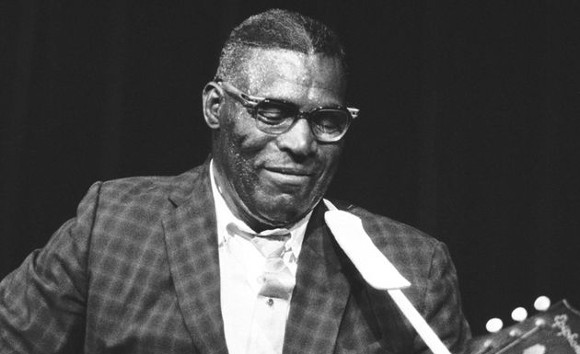
Howlin’ Wolf, a nickname for Chester Arthur Burnett, was an American Blues musician, born on June 10, 1910, in White Station, Mississippi. Ranked at #51 by the Rolling Stone Magazine in the 100 Greatest Artists of All Time, and arguably deserving a better spot on the list, Wolf is without a doubt one of the most influential musicians the world has even seen. With his strong, penetrating voice and incredible skills behind the guitar, Wolf produced some of the most popular Blues songs. The Chicago Blues star had a very difficult childhood, as his parents had separated and was later treated harshly by his mother and uncle. Despite his troubled past, Wolf would become arguably the most influential Blues musician of the 20th century.
One of Wolf’s earliest influences was Charlie Patton, an important blues musician of Mississippi at the time. After hearing Patton play for days that turned into months, Wolf began learning the guitar from him. Around the same time, Wolf was also impressed by the music of the Mississippi Sheiks, Blind Lemon Jefferson, Lonnie Johnson, Tampa Red, Blind Blake, and Tommy Johnson. One of the earliest songs Wolf learnt was Blind Jefferson’s “Match Box Blues“. Impressed by Jimmie Rodger’s ‘yodling’ in his songs, Wolf furnished his own singing with the classic ‘howling’ heard in so many of his tracks. Throughout the 1930s, Wolf performed with many artists such as Floyd Jones, Johnny Shines and Honeyboy Edwards, and after serving a brief period in the military in World War II, formed a band with guitarist Willie Johnson and harmonica player Junior Parker. It was only in the early 1950s when Wolf really began to make it in to the mainstream blues scene of the time. His earliest songs, including “How Many More Years” and “Riding in the Moonlight” were recorded in 1951, firmly popularizing him in the local community as a prolific musician. Over the next few years, Wolf regularly changed guitarists and other musicians in his band, attracting a number of famous guitarists in to the Chicago Blues scene. Towards the end of the 1950s, some of his songs, such as “Moanin’ at Midnight”, “Who Will Be Next” and “Smokestack Lightning” appeared on the Billboard R&B charts. During 1959, Wolf’s first album, Moaning in the Midnight was released.
During the early 1960s, Wolf continued playing impressive music pertinent to the Chicago Blues arena, coming with individual tracks such as “Wang Dang Doodle”, “Back Door Man”, “Spoonful”, “The Red Rooster”, “I Ain’t Superstitious”, “Goin’ Down Slow” and “Killing Floor”. Although these songs never became mainstream in the traditional scheme of things, but were later popularized by other British and American bands. In 1962, Wolf released his second album, Howlin’ Wolf. After touring Europe as part of the American Folk Blues Festival in 1964, he met The Rolling Stones, and worked on a few songs with the band. Their rendition of Wolf’s song, “The Red Rooster”, became an instant hit and had topped the charts in the UK. Around the early 1970s,Wolf worked on several other albums with Bo Dudley, Muddy Waters, Eric Clapton and Steve Winwood. Some of these albums included hits such as The Super Super Blues Band, The Howlin’ Wolf Album and The London Howlin’ Wolf Sessions.
Howlin’ Wolf passed away on January 10, 1976 at the Hines VA Hospital in Hines, Illinois from kidney disease.
